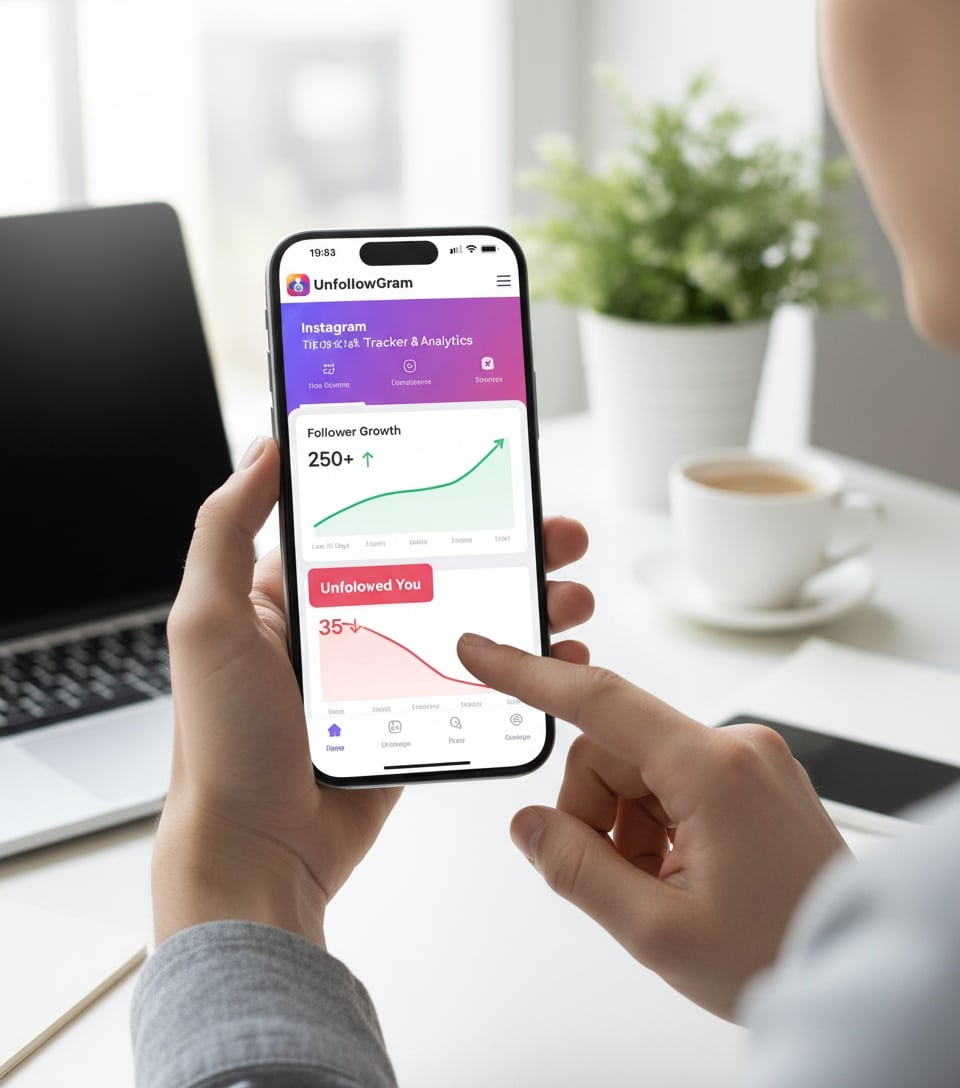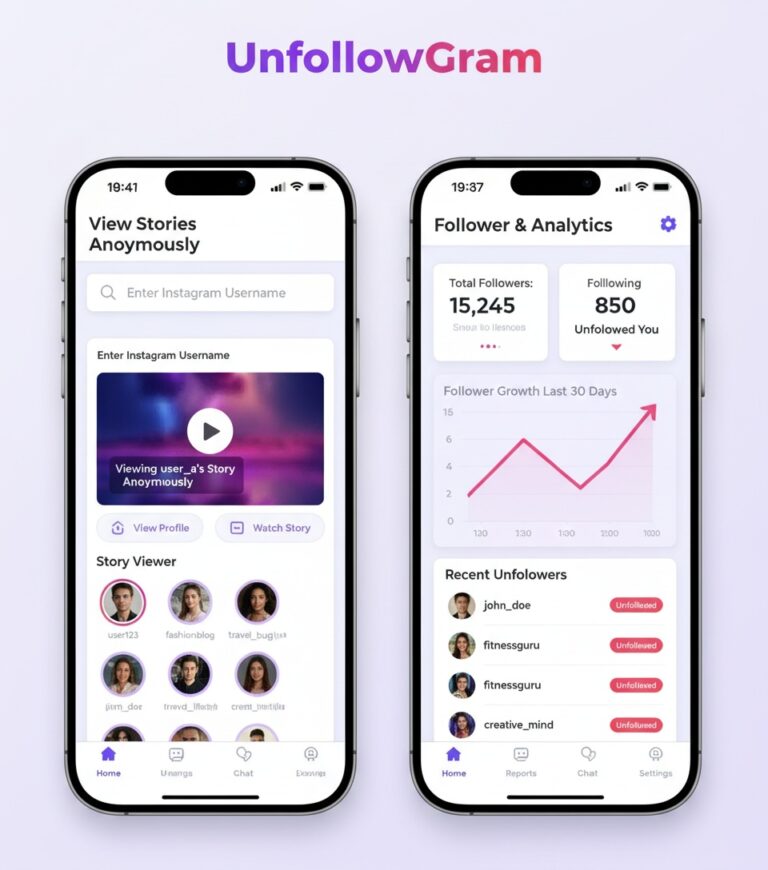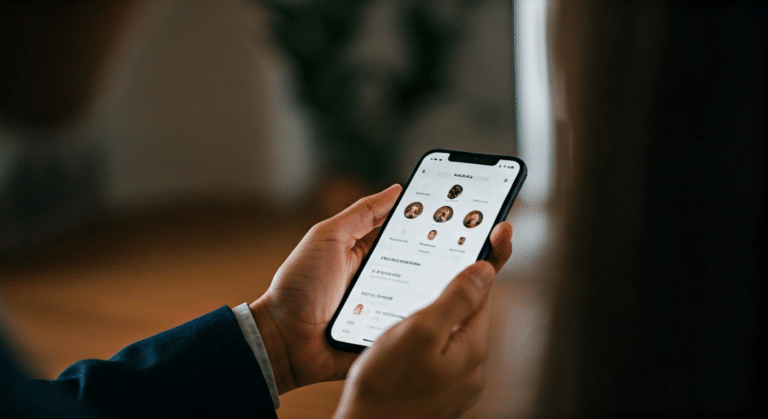How to See Who Doesn’t Follow You Back on Instagram
Last Updated on October 18, 2025 by Ethan Reynolds
You’ve been wondering who doesn’t follow you back on Instagram, haven’t you? It’s honestly one of the most common questions Instagram users ask. The platform doesn’t make this information easy to find, which is frustrating when you’re trying to clean up your following list or just curious about your social media relationships.
Let me break down exactly how to check who doesn’t follow you back on Instagram, why Instagram hides this info, and the safest ways to discover lost followers without putting your account at risk.
Check who don’t follow back
Why Instagram Doesn’t Show You Who’s Not Following Back
Instagram deliberately keeps this information hidden from users. Their goal is to keep people engaged with the platform, rather than obsessing over who unfollows them or who doesn’t reciprocate their follows. The company wants you scrolling through your feed and engaging with posts, not managing your follower list like a spreadsheet.
But here’s the thing: understanding your follower relationships actually helps you build a better audience. If you’re following hundreds of accounts that ignore your content, you’re cluttering your feed with irrelevant posts. For businesses and content creators, tracking followers who don’t engage is crucial for optimizing your social media strategy.
The Manual Method: Time-Consuming But Free
You can manually check who doesn’t follow me back on Instagram without any apps. Open your Instagram account, tap on your profile, and navigate to your following list. Then compare it against your list of followers by checking each username individually.
Super easy, right? Actually, no. If you follow more than 50 accounts, this process becomes painfully tedious. You’ll spend hours scrolling and cross-referencing usernames. Plus, Instagram limits how quickly you can scroll through these lists to prevent automated behavior.
The Risky Alternative: Third-Party Apps That Require Login
Search for “Instagram unfollowers tracker” and you’ll find hundreds of third-party apps promising to show you non-followers instantly. Most of these apps require you to log in with your Instagram username and password.
Stop right there. Logging into any third-party app with your Instagram credentials is dangerous. You’re handing over complete access to your account, including your private messages, posts, and personal data. Instagram explicitly warns against sharing your password with any external service.
These apps create serious security risks:
- Account hijacking and unauthorized posts
- Stolen personal data sold to advertisers or worse
- Spam comments and direct messages sent from your account
- Permanent account suspension for violating Instagram’s terms
- Malware installation on your device
I’ve seen countless users lose their accounts permanently because they trusted the wrong follower tracker app. Instagram’s security systems detect these unauthorized logins and often lock accounts as a protective measure.
The Safe Solution: Privacy-First Tracking
So how do you see who doesn’t follow you back on Instagram without compromising security? The answer is using tools that work through Instagram’s official authorization system, not direct password access.
UnfollowGram operates as an Instagram unfollowers tracker that connects to your account through OAuth, the same secure system Instagram uses for official partner apps. You authorize limited access to your follower data without ever sharing your password. The tool can identify lost followers, track unfollowers, and analyze your Instagram data while keeping your account completely secure.
The difference is significant. Password-based apps get full access to everything. OAuth-based tools only access the specific follower information you authorize, and you can revoke that access anytime through your Instagram settings.
How to Check Who Doesn’t Follow Back: Step by Step
Here’s the straightforward process for discovering who doesn’t follow me back on instagram:
Visit an Instagram unfollowers tracker that uses secure authorization. Connect your Instagram account through the official OAuth system by tapping the authorize button. Wait 60-90 seconds while the tool downloads your follower list and following list to compare them. Review the complete list of users who don’t follow you back with timestamps and activity data.
The entire process takes less than two minutes. You’ll immediately see which accounts aren’t following you back on Instagram, sorted by when you followed them. This helps you decide which accounts to unfollow based on how long they’ve ignored your follow request.
For iOS users, there’s a dedicated followers and unfollowers app that makes tracking even more convenient. The mobile app syncs with your data and sends notifications when users unfollow you or when new lost followers appear in your following list.
Understanding Your Results
When you discover your unfollowers, you’ll notice different categories of accounts. Some are businesses or influencers who rarely follow back anyone. Others are personal accounts that might not have noticed your follow, or people who deliberately curate their following list.
Ghost followers represent another category worth mentioning. These are accounts that follow you but never engage with your content through likes, comments, or shares. While they technically follow you back, they contribute nothing to your engagement rate. Many Instagram unfollow tracker apps now identify these ghost followers alongside lost followers.
The key is deciding what matters for your Instagram strategy. Are you trying to build genuine connections? Then unfollow users who show zero interest in your content. Running a business account? Focus on engagement quality over follower count.
Managing Your Following List Effectively
Once you identify accounts not following you back, you need a strategy for managing your following list. Instagram limits how many users you can unfollow per hour to prevent spam behavior. The platform allows roughly 200 unfollows per day, spread throughout 24 hours.
Unfollow in small batches. Remove 20-30 non-followers every few hours rather than mass-unfollowing everyone at once. Instagram’s spam detection algorithms flag accounts that unfollow too many users rapidly, potentially leading to temporary action blocks.
Focus on accounts you followed recently first. If someone hasn’t followed you back within a week, they probably won’t. Long-term follows that never reciprocated are also good candidates for removal.
Tools like the best Instagram followers app can automate this process safely by spacing out unfollow actions and respecting Instagram’s rate limits. UnfollowGram’s tracking features help you identify which non-followers to prioritize based on account activity and engagement.
Advanced Tracking: Beyond Basic Non-Followers
Understanding who doesn’t follow you back is just the beginning. Comprehensive Instagram analytics reveal patterns in your follower behavior that help optimize your content strategy.
Track recently unfollowed accounts using an Instagram recent followers app to see when people unfollow and correlate it with specific posts. Notice a spike in unfollowers after posting certain content? That’s valuable feedback about what your audience dislikes.
Monitor mutual followers separately from one-way follows. Mutual followers are more likely to engage with your posts and share your content. Building a community of mutual followers creates stronger social media relationships than collecting thousands of non-reciprocal followers.
Use a follow app to track Instagram followers and unfollowers over time, not just as a one-time check. Weekly reports show trends in your follower growth and help you understand which strategies work.
What About Bulk Unfollowing?
You’ll find apps promising to unfollow everyone who doesn’t follow you back on Instagram automatically. Be extremely careful with these. Mass unfollowing triggers Instagram’s spam filters faster than almost any other action.
The platform treats bulk unfollowing as bot-like behavior and will temporarily block your ability to follow or unfollow anyone. Repeated violations can result in permanent account restrictions or shadowbanning, where your content stops appearing in hashtags and the explore feed.
If you must clean up hundreds of unfollowers, spread the process over several weeks. Use apps that respect Instagram’s rate limits and implement delays between actions. Look for services that offer manual control rather than automatic bulk operations.
The 5-3-1 Rule for Instagram Engagement
Speaking of Instagram strategies, you’ve probably heard about the 5-3-1 rule. This engagement method suggests that for every post you publish, you should engage with five posts in your feed, comment meaningfully on three posts from accounts in your niche, and share one piece of valuable content from someone else.
This approach naturally grows your follower count with accounts more likely to follow you back. When you consistently engage with specific accounts, they notice your username and often check out your profile. Genuine engagement attracts mutual followers rather than the one-way relationships that create your non-follower problem.
Combine the 5-3-1 rule with regular monitoring through an app to see who unfollowed you on Instagram to maintain a healthy follower ratio while building meaningful connections.
Privacy Concerns and Data Security
Let’s address the elephant in the room: data privacy. When you grant any tool access to your Instagram information, you’re trusting them with personal data. Read reviews carefully and verify that any Instagram unfollow app you consider has a clear privacy policy.
Legitimate services like UnfollowGram specify exactly what data they access (your follower list and following list) and what they don’t touch (your messages, posts, or personal information). They also explain how they store your data and who has access to it.
Check the app’s permissions through your Instagram settings under Authorized Applications. You can revoke access instantly if you notice suspicious activity or simply no longer want the service connected to your account.
Never trust apps that request permission to post on your behalf or access your direct messages. Tracking lost followers requires only read access to your follower lists, nothing more.
Alternative Methods for Specific Situations
Sometimes you just want to know if one specific person follows you back without scanning your entire follower list. Visit their profile directly and look at the Follow button. If it says “Follow,” they don’t follow you. If it says “Following,” you’re already following them, but they haven’t followed back.
You can also check mutual followers by tapping on someone’s follower count and looking for your username. This works for small accounts, but becomes impractical once someone has thousands of followers.
For tracking specific accounts, bookmark their profiles and check weekly whether they’ve followed you back. This manual approach works fine when you’re only monitoring a handful of accounts rather than your entire following list.
Frequently Asked Questions
How do I make sure someone isn’t following me on Instagram?
Navigate to your list of followers and search for their username. If they don’t appear, they’re not following you. Alternatively, visit their profile and tap on their following list to search for your username there.
Can people see when I check who doesn’t follow me back?
No. Using a secure tool to compare your following list against your followers is completely private. Instagram doesn’t notify users when you analyze this data, and other accounts can’t see that you’re using tracking tools.
Why did someone who doesn’t follow me back like my post?
Instagram’s algorithm sometimes shows your posts to non-followers, especially if you use hashtags effectively. They might engage with your content without being a follower. Some users also browse specific hashtags or location tags and like posts from accounts they don’t follow.
Should I unfollow everyone who doesn’t follow me back?
Not necessarily. Following industry leaders, news sources, or inspirational accounts that don’t follow back can provide value to your feed. Focus on unfollowing inactive accounts or those that don’t align with your interests anymore.
Final Thoughts on Managing Non-Followers
Understanding who doesn’t follow you back on Instagram gives you control over your social media experience. You can curate your feed to show content you actually care about while maintaining a follower list that reflects genuine relationships or professional interests.
The process doesn’t need to be complicated or risky. Avoid apps that require your password, use tools that implement proper security measures, and respect Instagram’s rate limits when unfollowing accounts. Check who doesn’t follow me back on Instagram using a free tool that prioritizes your privacy and account security.
Remember that Instagram is ultimately about building connections and sharing content you love. Don’t obsess over follower counts or reciprocal follows to the point where it ruins your enjoyment of the platform. Use these tools to optimize your experience, then focus on creating great content and engaging authentically with your audience.
Want to see exactly how to see who unfollowed you on Instagram? Start with a secure tracking tool, review your non-followers once per week, and gradually clean up your following list. Your Instagram feed will become more relevant, your engagement rate may improve, and you’ll have a clearer picture of which accounts actually value your presence on the platform.
Ethan (co-founder) is a seasoned social media marketing strategist with over a decade of experience in digital branding, audience growth, and engagement strategies. He holds a Bachelor's degree in Marketing and has earned multiple certifications, including the Meta Certified Digital Marketing.
Ethan has worked with global brands to refine their social media presence, leveraging data-driven insights and cutting-edge strategies to optimize engagement and retention. As the founder of a boutique social media consultancy, he has helped influencers, businesses, and startups scale their online presence organically. He is also a frequent contributor to industry publications and a speaker at digital marketing conferences.






